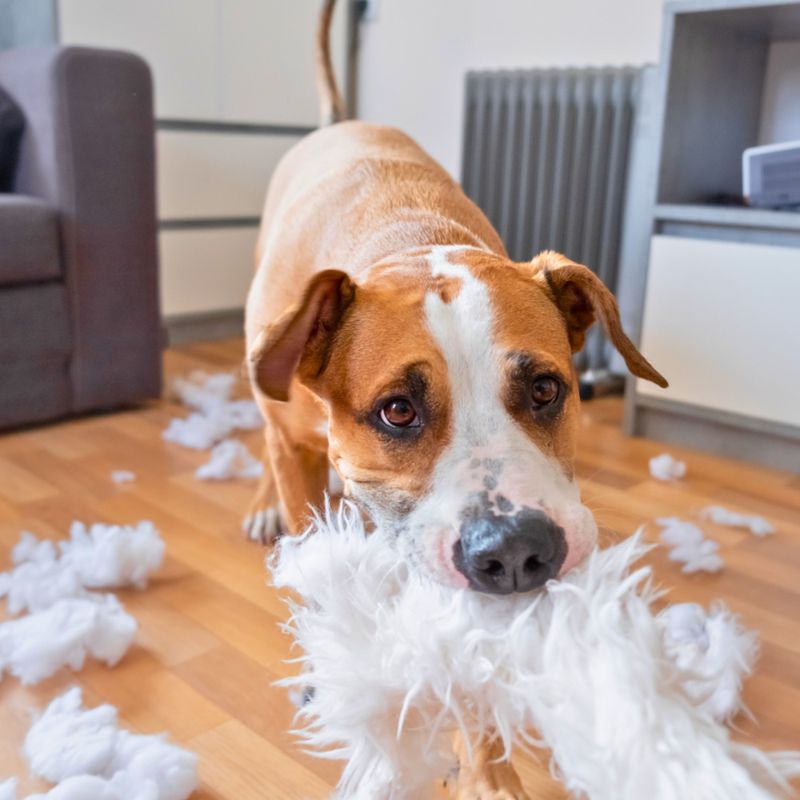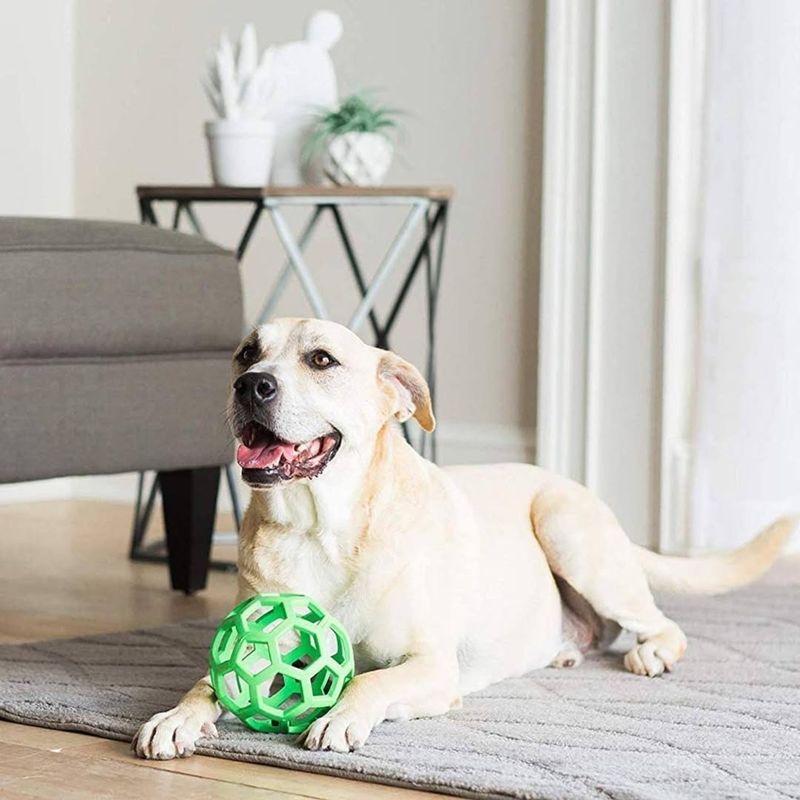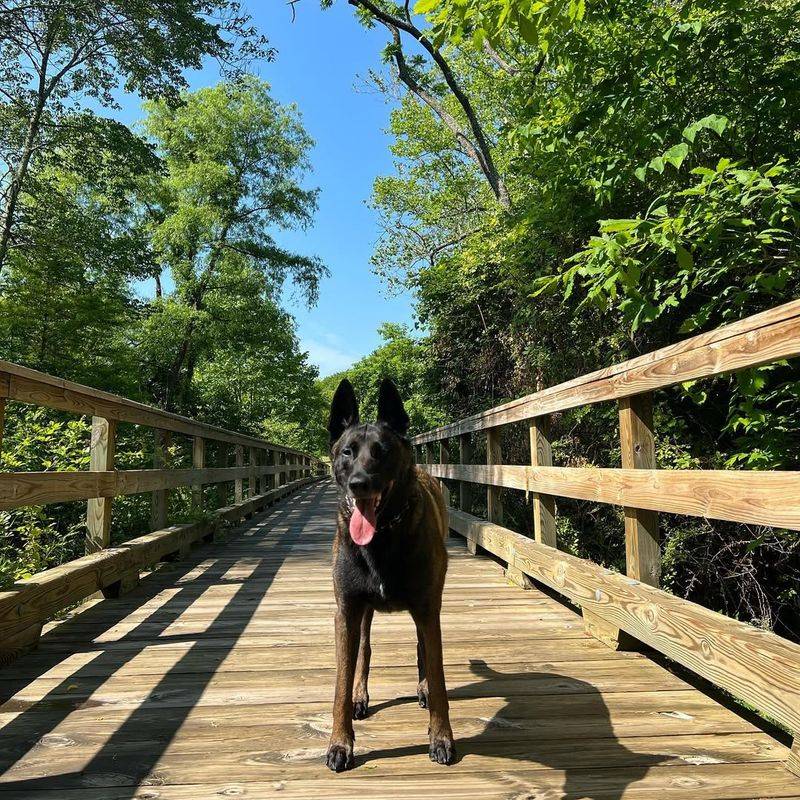15 Warning Signs Your Dog Is Unhappy

Dogs are known for their loyal and joyful nature, but just like humans, they can experience periods of unhappiness. As pet owners, it’s important to recognize the subtle signs that your dog may not be feeling their best.
While some behaviors are easy to identify, others can be more subtle and often go unnoticed. Recognizing these signs early can help ensure your dog’s well-being and strengthen the bond between you and your furry companion.
1. Lack Of Appetite

The sight of a full bowl untouched by your dog is enough to raise an eyebrow. When a dog skips a meal or two, it’s often a sign of more than just a picky palate. An unhappy or stressed dog may lose interest in their once-favorite meals. Changes in routine, environment, or even the presence of new family members can lead to a loss of appetite.
It’s crucial to observe your dog’s eating habits closely. If the pattern persists, it might be time for a trip to the vet. Nutritional deficiencies and underlying medical issues could be the culprits. However, a simple case of the blues or an emotional slump can also cause this phenomenon. Remember that diet is a window into your dog’s overall health.
Ensuring they receive a balanced diet tailored to their needs is essential. If your dog’s appetite continues to wane, consider consulting with a professional to tailor a meal plan that caters to both their physical and emotional wellbeing.
2. Excessive Sleeping

Ever notice your dog snoozing the day away, long past their usual nap time? While dogs do enjoy their beauty sleep, excessive sleep could be indicative of unhappiness or stress. Dogs, much like humans, may use sleep as an escape mechanism when they’re feeling down. Increased lethargy and a lack of interest in playtime or walks are red flags.
These behaviors often mean your dog is not just tired but possibly dealing with emotional stress. It could stem from changes at home, lack of stimulation, or even the absence of a beloved family member. It’s important to strike a balance between rest and activity.
Engaging your dog in interactive play and ensuring they receive adequate physical exercise can help mitigate excessive sleeping. If your dog’s lethargy continues, a visit to the vet may be necessary to rule out any underlying health issues.
3. Aggressive Behavior

When your sweet pooch suddenly turns into a growling gremlin, it may be a sign that they’re not in the happiest of moods. Aggression in dogs can manifest as barking, growling, or even nipping, and is often a cry for help. This behavior might be their way of communicating discomfort, fear, or unhappiness.
Aggressive behavior can stem from various sources, including fear, anxiety, or even pain. It’s essential to approach the situation with patience and understanding, as yelling or punishing your dog may only exacerbate the problem. Instead, observe what triggers the aggression and try to address the root cause.
Consulting with a professional dog trainer or behaviorist can be beneficial in managing and reducing aggressive tendencies.
They can offer insights into behavior modification techniques and help you create a positive and safe environment for your furry friend.
4. Withdrawal From Social Interaction

If your dog suddenly becomes the canine equivalent of a wallflower, it might be time to investigate. A happy dog typically thrives on interaction, whether it’s a belly rub from you or a romp with fellow pooches at the park.
When they start avoiding these interactions, it may signal unhappiness. Withdrawal from social activities can indicate that your dog is feeling insecure or stressed. It could be due to a change in their environment, a negative experience, or simply feeling under the weather.
It’s crucial to monitor these changes and determine if they coincide with any recent events. Encouraging gentle social interactions and slowly reintroducing their favorite activities can help lift their spirits.
If withdrawal continues, consider reaching out to a veterinarian or pet psychologist for guidance.
5. Destructive Chewing

Destructive chewing is more than a mere nuisance; it’s often an indicator that your dog is unhappy or anxious. Chewing releases endorphins, which can temporarily alleviate their stress. This behavior is common in dogs that are bored, lonely, or facing separation anxiety. A sudden change in the household, such as a new pet or a family member moving away, can also trigger this response.
It’s important to provide your dog with appropriate chew toys and ensure they get enough physical and mental stimulation. Engaging in regular play sessions and providing interactive toys can help redirect their energy and reduce destructive behavior.
If the issue persists, consulting with a dog trainer or behaviorist may offer additional strategies to curb this habit while addressing the underlying emotional needs.
6. Excessive Licking

When your dog seems to be auditioning for a role in a paw-licking contest, take note. Excessive licking, especially of paws or other body parts, can be a sign of anxiety or discomfort. While occasional grooming is normal, constant licking might indicate that your dog is unhappy. This behavior often serves as a self-soothing mechanism to cope with stress or boredom.
Allergies, skin irritations, or even underlying medical conditions could also contribute to this habit. It’s important to observe when and where your dog licks, as this can offer clues about the cause.
Providing mental stimulation through toys and activities can help distract your dog from licking.
7. Frequent Whining Or Barking

Frequent whining or barking can indicate distress or dissatisfaction. This vocal behavior is often a dog’s way of communicating their needs or discomfort. Separation anxiety is a common cause of excessive vocalization. Dogs left alone for extended periods may bark or whine as a way to express loneliness.
Changes in the household, such as moving to a new home or the arrival of a new family member, can also trigger this behavior. Providing plenty of positive reinforcement when your dog is calm and quiet can help reduce vocal outbursts. Interactive toys and background noise, like a TV or calming music, may alleviate their anxiety.
If your dog’s vocalization continues to be a problem, consulting with a professional trainer can provide additional strategies to address their emotional needs.
8. Changes In Grooming Habits

When your dog starts looking like a disheveled version of themselves, it might be a red flag. Changes in grooming habits, such as neglecting their fur or over-grooming, can indicate unhappiness or health issues.
A once well-kept pooch may become scruffy or obsessively groom certain areas. Stress, anxiety, or underlying medical conditions can lead to changes in grooming behaviors. An unhappy dog might neglect grooming altogether or engage in compulsive licking and chewing.
Pay attention to these changes as they can reflect both emotional and physical health concerns. Regular grooming sessions not only maintain your dog’s appearance but also serve as a bonding activity.
Creating a calm and supportive environment at home can also encourage healthy grooming behaviors.
9. Loss Of Interest In Play

A loss of interest in play is a common sign of an unhappy dog. Playtime is not just fun; it’s an essential part of a dog’s mental and physical well-being. Changes in play behavior can result from a variety of factors, including boredom, stress, or even physical discomfort. It’s crucial to keep your dog mentally and physically stimulated with diverse activities.
Regular play sessions and introducing new toys can help rekindle their interest. If your dog’s disinterest in play continues, consider exploring new activities together, like agility training or interactive games.
Engaging in these activities can strengthen your bond and provide your dog with the stimulation they need. Should the issue persist, consulting with a vet or pet behaviorist may be beneficial.
10. Changes In Body Language

Your dog’s body language can speak volumes about their emotional state. Subtle cues like a tucked tail, flattened ears, or avoiding eye contact can indicate unhappiness. Understanding these signals is key to identifying when your dog might be feeling down. Changes in body language often reflect stress, fear, or discomfort.
It’s important to consider the context in which these behaviors occur, as they can be situational. For instance, a tucked tail might appear during a thunderstorm or in a crowded environment. Observing and interpreting your dog’s body language can help you respond appropriately to their needs. Creating a safe and comforting space for your dog can alleviate stress and encourage positive body language.
If you’re concerned about your dog’s behavior, seeking advice from a professional trainer or behaviorist can provide insights into addressing and improving their emotional well-being.
11. Changes In Toileting Habits

When accidents become a regular occurrence, it might be a sign that your dog is unhappy or stressed. Changes in toileting habits, such as frequent accidents indoors or difficulty in house training, often point to an emotional issue or health problem. Stress, anxiety, and changes in the home environment can disrupt a dog’s established toileting routine.
Additionally, medical issues such as urinary tract infections or gastrointestinal problems can lead to unexpected accidents. It’s important to observe these habits and consider any recent changes in your dog’s life.
Establishing a consistent routine and offering positive reinforcement can help restore proper toileting habits. Addressing both behavioral and health aspects is essential in ensuring your dog’s happiness and well-being.
12. Panting And Shaking

Though panting is normal after a vigorous game of fetch, excessive panting and shaking can be signs of an unhappy or stressed dog. These behaviors often indicate anxiety or fear, especially when they occur without apparent physical exertion. Panting and shaking can result from environmental stressors like loud noises, unfamiliar places, or even separation anxiety.
They can also be symptoms of underlying health issues that require attention. Monitoring when and where these behaviors occur can provide insights into potential triggers. Creating a calming environment and minimizing exposure to stressors can help alleviate these symptoms. Providing reassurance and comfort can also ease your dog’s anxiety.
If panting and shaking persist, consulting with a veterinarian can help identify any medical concerns and provide guidance on managing stress and anxiety.
13. Decreased Interest In Daily Activities

When your dog’s enthusiasm for walks, treats, or even the sound of the leash jingling wanes, it’s worth taking note. A decreased interest in daily activities often signals that your dog is feeling unhappy or unwell. These activities are usually the highlights of their day, so a sudden lack of interest can be concerning.
This behavior can result from physical discomfort, boredom, or emotional distress. It’s important to keep a routine that includes regular exercise and mental stimulation. Engaging your dog in new activities or varying their exercise routine can help reignite their interest and boost their spirits.
If your dog’s disinterest continues, it may be time to consult with a veterinarian to rule out any health issues. Addressing both physical and emotional factors is crucial in ensuring your dog’s overall happiness and well-being.
14. Increased Nervousness Or Anxiety

If your dog is displaying signs of increased anxiety, such as pacing, hiding, or trembling, it could be a sign of unhappiness.
Dogs are sensitive to their environment, and sudden changes or stressors can affect their emotional well-being. It’s important to address the root cause of their anxiety and provide a calming, secure environment.
15. Changes In Eating Or Drinking Habits

While a lack of appetite is a common sign of unhappiness, sometimes dogs may overeat or drink excessively as a way to cope with stress or discomfort.
Changes in their eating or drinking habits can indicate emotional distress or underlying health issues, so it’s essential to monitor these changes and consult with a vet if necessary.






